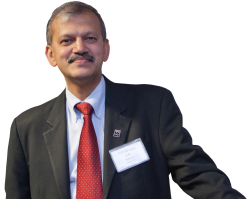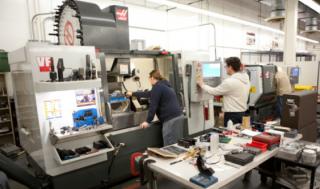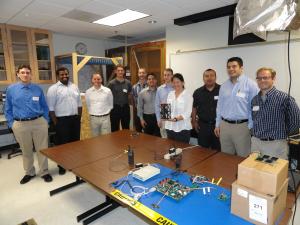Conferences: Art of Innovation conference breaks new ground
 It was an ideal match: the In2:InThinking Network paired with the college’s Ernie Schaeffer Center for Innovation & Entrepreneurship and Department of Manufacturing Systems Engineering and Management (MSEM) for a one-day conference on innovation.
It was an ideal match: the In2:InThinking Network paired with the college’s Ernie Schaeffer Center for Innovation & Entrepreneurship and Department of Manufacturing Systems Engineering and Management (MSEM) for a one-day conference on innovation.
The Art of Innovation conference was conceived last year, when Ileana Costea, chair of the MSEM department, attended the 2012 In2:InThinking annual forum. In2:In Thinking is a nonprofit organization that brings together people who share an interest in using better thinking to create a better future.
“They were talking about various aspects of problem solving but really thinking out of the box, which I liked,” she says. She suggested to the group’s president, Bill Bellows of Aerojet Rocketdyne, that CSUN host a small one-day conference on innovation and entrepreneurship in conjunction with the 2013 In2:In Thinking Forum, and that both events be held on campus. The two events would collaborate on space and advertising and share resources. The conference provided an excellent platform for the Schaeffer Center, and CSUN was a perfect location for the In2:In Thinking Forum, so the plan was put into motion.
Costea and Mark Rajai, assistant professor of MSEM and director of the Schaeffer Center, co-chaired the inaugural Art of Innovation conference; Shereazad “Jimmy” Gandhi, assistant professor of MSEM, became its program chair. The event they planned featured two keynote speakers, CSUN alumnus Dale S. Deardorff, founding director of innovation and strategic thinking at the Rocky Peak Leadership Center, whose talk was titled “Structured Innovation Systems,” and Matt Keennon, senior scientist at AeroVironment, Inc., who spoke on “Turning Giant Dreams into Tiny Realities: Building the Micro Flying Machines of Tomorrow.” In addition, graduate students were invited to present projects. Topics ranged from innovation in construction management to K-12 pedagogy, from tinnitus to automotive braking systems, as well as green innovations at the San Pedro port.
The conference, which took place June 21, surpassed attendance projections and attracted participants from as far away as New York. Students and faculty made connections leading to research collaborations, and attendees also mingled with the In2:In Thinking Forum attendees. The event even turned a small profit, which is highly unusual in a climate where most conferences struggle to break even.
“It was a huge success,” Rajai says. “We hope to make this a national and international event.”
Plans are under way to repeat the conference next June, with an emphasis on expanding participation from groups representing more diverse industries, locations and fields of study.
“We want to make an annual meeting a tradition, which should stimulate innovation,” says Costea.
A message from the Dean
February 6, 2014Industry partnerships – HAAS
February 6, 2014Industry Partnerships – Jet Propulsion Laboratory
February 6, 2014




